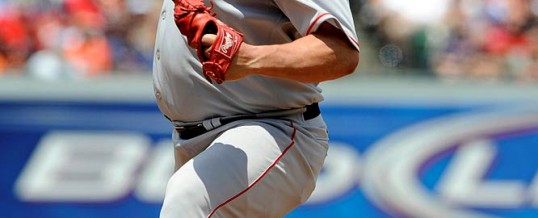
NEW YORK — They were introduced by a mutual acquaintance who believed that they could help each other. Bartolo Colon, 37, was broken-down and overweight, but harbored dreams of returning to the major leagues. Leonel Liriano, 48, was a doctor in search of a high-profile athlete willing to try a controversial form of stem cell therapy. When he failed to convince retired Red Sox star Pedro Martinez to give the procedure a try, Liriano turned to Colon, and a partnership was born.
A little more than 20 months later, Colon is thriving as a pitcher for the Yankees thanks to a fastball resurrected, the result of injuries healed with stem cells taken from his own bone marrow and fat tissues.
The unlikely recovery, however, has prompted questions about whether Colon’s success has been a product of a medical miracle or simply a sophisticated form of cheating.
“He worked hard,” Liriano said in a telephone interview today. “And he let the stem cells do their job.”
Still, Major League Baseball has launched an investigation into the matter, spurred by the chance that the procedures included the use of banned human growth hormone.
“The only thing that we used was his bone marrow and his fat tissues, that’s it,” said Liriano, who assembled a team that was headed by an American doctor, Joseph Purita.
Purita did not return phone messages, though he told the New York Times, which first reported on Colon’s treatments, that HGH was not used on the pitcher. Colon refused to answer questions at Yankee Stadium today, though through a team spokesman he said that he would address the topic following his start tonight against the Red Sox.
The Yankees maintain they had no knowledge of the procedures when they signed Colon to a contract this spring in hopes that he might regain a sliver of his prior form.
“I was not aware of it,” said Yankees general manager Brian Cashman, who learned recently of the treatments after being informed by Colon’s agent. “This is different. We’ve never had a player have this procedure before.”
According to Liriano, doctors treated Colon with two separate procedures, designed to work in conjunction with one another.
In the first, which took place last April, a team of doctors led by Purita took stem cells extracted from bone marrow and fatty tissue in Colon’s hip and injected them into the torn rotator cuff in his right shoulder and the damaged ligaments in his elbow. They hoped that the stem cells would promote healing.
In the second procedure, which took place six weeks later, doctors drew some of Colon’s blood, treated it through a specially designed centrifuge that spins the blood — to boost its platelet concentration — and injected the blood back into his body, a process called platelet-rich plasma therapy.
Several athletes, including former Yankees outfielder Xavier Nady and Pittsburgh Steelers wide receiver Hines Ward, have used PRP to speed up the healing process.
However, much less is known about stem cells when used to treat athletic injuries.
“It’s the first time I’ve heard of it being used,” said specialist James Gladstone, co-chair of the sports medicine division at Mount Sinai in New York.
Gladstone cites a lack of conclusive evidence and research about both methods and remains skeptical that such treatments can heal injuries such as a torn rotator cuff, though he acknowledged that the therapy could heal a partial tear. He believes that the procedures likely helped alleviate the pain that came from inflammation caused by Colon’s original injuries.
Liriano acknowledges the doubts, but he draws parallels to once-experimental procedures such as heart bypass surgery, which he said faced scrutiny before becoming commonplace. More awareness, Liriano said, will put stem cell treatment on the track toward acceptance.
It’s why he views Colon’s success as a possible turning point. When Colon takes the mound tonight against the Red Sox, it will be with a 2-1 record, a 3.86 ERA and a fastball that has touched 96 mph. He had not thrown at that velocity since 2008, before injuries forced him to miss all of last season, and sent him on a path toward Liriano.
“This is a fascinating stage because we are going to be able to cure not just athletes but other diseases,” said Liriano, who hopes Colon’s story helps trigger a push for more research. “This is a great opportunity to show that stem cells do work.”
MAY
2011
